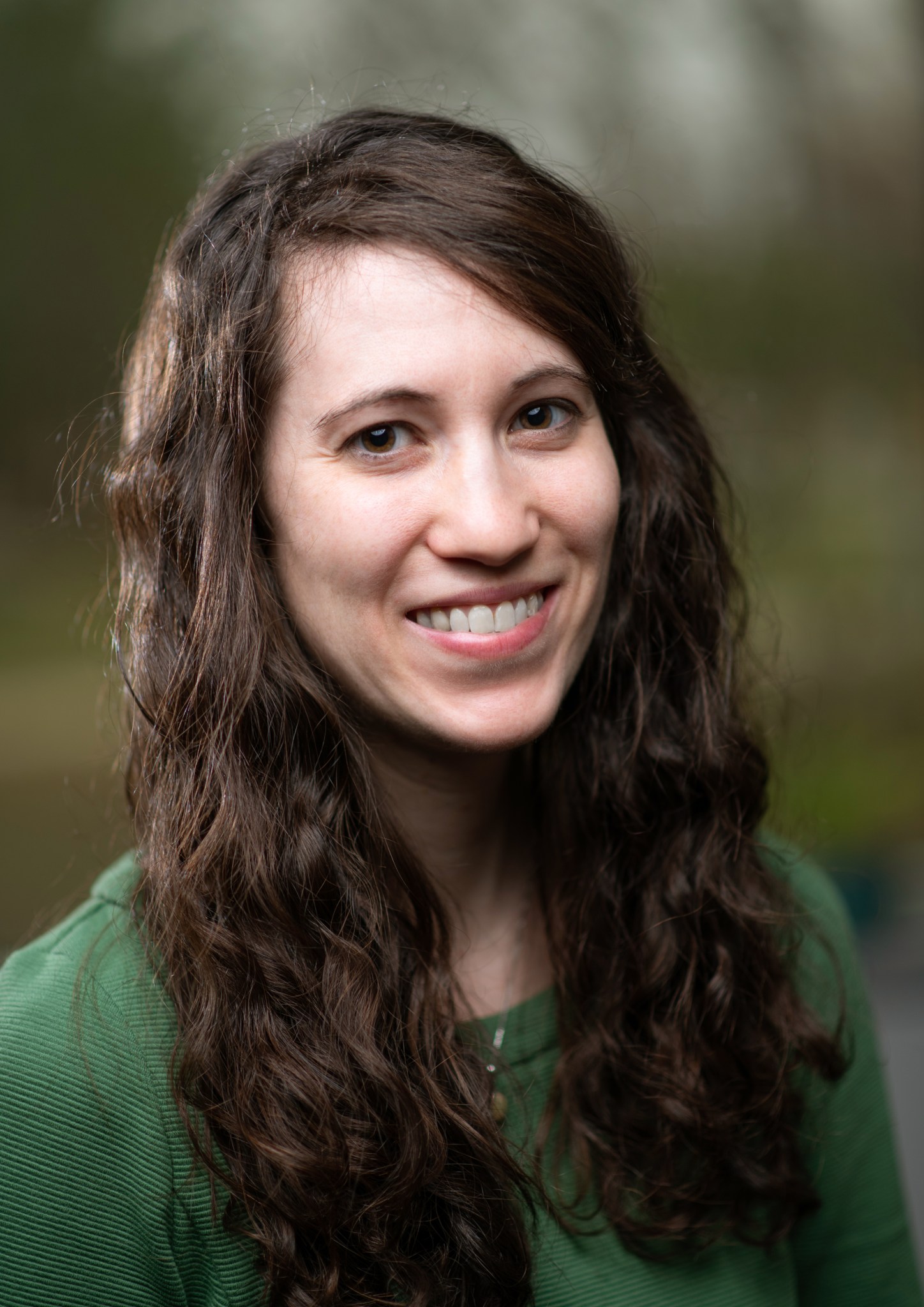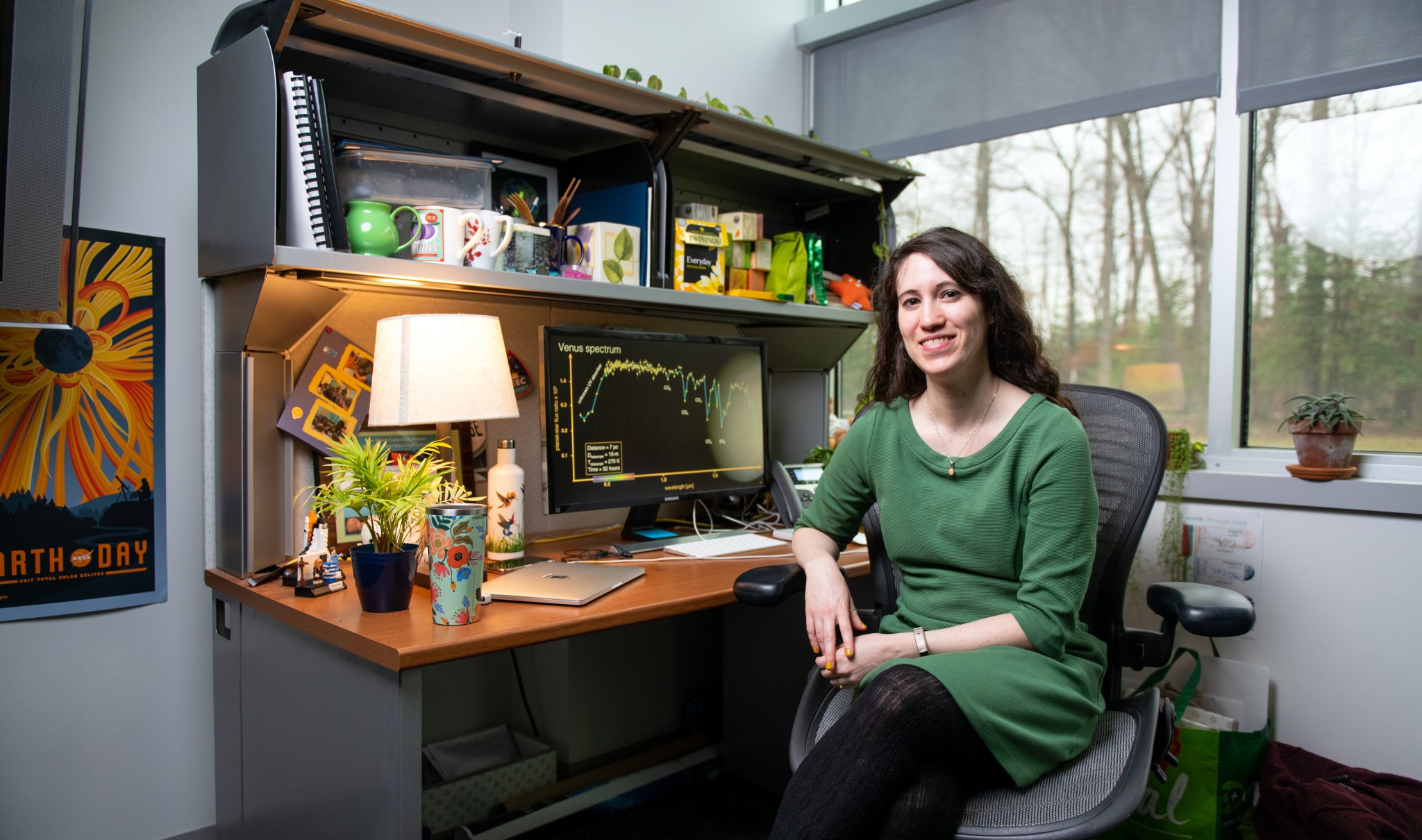
Highlighting Giada Arney also reminds us to recognize Women’s Equality Day, coming up on August 26. Giada and all women working at Goddard, make our workforce diverse, strong and highly skilled.
Name: Giada Arney
Occupation: Research space scientist
Organization: Code 693, Planetary Systems Laboratory, Planetary Science Division, Science Directorate
What do you do and what is most interesting about your role here at Goddard? How do you help support Goddard’s mission?
I spent three years working on the Large Ultraviolet Optical Infrared surveyor (LUVOIR) mission concept study, one of four flagship mission concepts under consideration by the 2020 Astrophysics Decadal Survey. LUVOIR is a concept for a large (8-meter to 15-meter) space telescope that could do transformative science across a range of astrophysics and planetary studies.
More recently, I just started working as deputy principal investigator of another mission concept study led by Goddard, the Deep Atmosphere Venus Investigation of Noble Gases, Chemistry, and Imaging Plus (DAVINCI+). DAVINCI+ would study Venus, including its history, and it’s one of four Discovery-class missions recently selected by NASA for Phase A study.
Did you have a moment as a child when you knew what you wanted to do?
I’ve been interested in space since I was a kid. I have fond memories of my mom showing my sister and me the constellations from our backyard. She also used to take us to the library frequently, and spent a lot of time in the children’s science section. I’m fairly sure I checked out every single science book in the children’s section, especially the space books. My favorite books went into vivid detail on the planets of our solar system. I can remember how excited I was when I learned through one of these books that our own Earth is a planet too.
What is your educational background?
I got a bachelor’s degree in astrophysics from the University of Colorado and then a dual-title Ph.D. in astronomy and astrobiology from the University of Washington.
How did you come to Goddard?
One of the requirements of the dual-title Ph.D. in astrobiology at UW is to spend an academic quarter doing “research rotation,” which is undertaking a project outside of your home discipline. While in grad school, I had a vague idea that I might be interested in mission development, so I decided to come to Goddard for three months in 2015. I did some work on a precursor to the LUVOR concept and really enjoyed it. In 2016, I returned as a NASA Postdoctoral Fellow. I then applied for a permanent position at NASA and was hired in 2017.
What was your first big project at Goddard?
I started working on the LUVOIR mission concept as soon as I arrived as a postdoc. What excites me most about this mission is that it is designed to look for planets around other stars, called exoplanets, including potentially habitable exoplanets. Most compelling, it would be able to search for signs of life in the atmospheres of any potentially habitable worlds it finds. As part of the LUVOIR project, I led a group called the Science Support Analysis Team, which developed simulation tools and other capabilities to show what science LUVOIR could do. My own research focus was aimed at simulating what LUVOIR might be able to see on potentially habitable exoplanets, including remotely observable signs of life called biosignatures.

What makes working on a potential flagship mission exciting?
LUVOIR could revolutionize many aspects of planetary science and astrophysics. It would be the largest telescope we have ever flown; the largest version of LUVOIR we studied is more than twice the diameter of the James Webb Space Telescope. As outlined in our final report, based on our best estimates of exoplanet occurrence rates, our simulations predict that LUVOIR could find about 30 – 50 Earth-size planets in their stars’ habitable zones, the region around a star where it is possible for liquid water to exist on the surface of a planet. The idea of finding dozens of possibly Earth-like worlds is thrilling.
What makes Goddard so unique?
It was very excited to come here fresh out of graduate school and immediately begin working on such an ambitious mission concept that could someday rewrite science textbooks.
What makes DAVINCI+ interesting?
What excites me about DAVINCI+ is that it could help tell us the history of Venus, right up to its present state. Even though Venus is the closest planet in the universe to Earth, there are still so many things we don’t know about it. Venus is especially interesting to me because there is evidence that it might have been more Earth-like in the past, maybe even with oceans of water. But that possible early habitability has long been lost, and now Venus hosts the hottest terrestrial surface in our solar system – it’s high enough to melt lead there! DAVINCI+ could help us understand how this enigmatic world’s ostensively clement environment could have been transformed into the scorching hothouse it is today.
I also think it’s exciting to think about Venus in the context of exoplanets. We think that Venus represents a type of planet that probably occurs frequently in the exoplanet population. Hot, Venus-like worlds are also one of the most readily observable types of terrestrial planets for the upcoming Webb telescope. Some of our first observations of terrestrial planets with Webb might be of exo-Venus planets!
You recently helped organized a conference called “Exoplanets in Our Backyard.” Please tell us about your experience.
Exoplanets in our Backyard was a conference that I and another organized. The main goal of this conference was to increase collaboration and communication between exoplanet and solar system scientists. There has been a growing awareness that to study planets most effectively, solar system and exoplanet scientists need to work together. This is something Goddard has been enabling internally through its interdisciplinary Sellers Exoplanets Environments Collaboration (SEEC), which I’m a part of, but encouraging this type of collaboration on a broader community level is something that I hope will happen with increasing frequency in the coming years. The conference was held March 5–7, 2020 in Houston, and about 120 people attended, including our online participants.
On the last day of the meeting, we asked if anyone had generated a new idea or collaboration, and almost everyone raised his or her hand. On our post-conference online survey, 100% of respondents wanted to have a follow-on meeting, so that will definitely be in the works soon. I’d say the meeting was a great success, and I’ve very proud of it.
Is there something surprising about you that people do not generally know?
Since 2017, I’ve been one of four co-editors of a soon-to-be-published University of Arizona Press book called “Planetary Astrobiology.” Working on a book has been a real learning experience. It has been a lot of work, but I know it will all be worth it once I finally have a copy of this book on my shelf! My editorial duties have involved, of course, reviewing and editing chapters, but have also involved finding chapter authors, finding reviewers, and creating the book’s index. Besides being an editor of this volume, I’m also the lead author of its Venus chapter.
On the non-academic side, I love gardening. My husband and I just moved to a new house, and we want to put in a greenhouse to extend the growing season and save our plants from the deer that are frequent unwelcome visitors. I am planning to plant lots of vegetables, especially tomatoes, and flowers.
What do you hope to be doing in five years?
It would be really exciting if one of the mission studies I have worked on, like LUVOIR or DAVINCI+, is selected. It is incredible to imagine working on something that will someday fly to space and transform our view of the universe.
By Elizabeth M. Jarrell
NASA’s Goddard Space Flight Center

























